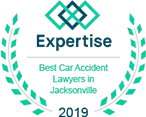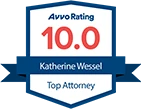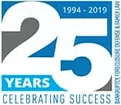Parker & DuFresne files more Chapter 13 bankruptcies than any other firm in Northeast Florida.
Chapter 13 is a process that will help you reorganize your finances by:
(a) catching up payments on your home or modifying your mortgage,
(b) restructuring payments on cars and
(c) reducing or eliminating many other types of debts.
In Chapter 13, you can also pay off or even eliminate taxes; bring child support payments current; reduce balances on secured debts, and eliminate credit card and medical debt.
Let our bankruptcy lawyers guide you through this complicated process.
From the moment you file a Chapter 13, the “Automatic Stay” starts protecting you from collection efforts of any kind by your creditors.
A creditor must seek permission from the judge to resume collection activities, and this is extremely rare.
What Chapter 13 Can Do For You
A Chapter 13 can do almost anything to give you the best opportunity to get your financial life back in order.
The creativity of your bankruptcy lawyer is the primary limit of a Chapter 13 Plan of Reorganization. Parker & DuFresne has filed at least 1000 Chapter 13 Plans over the last 25 years, and we’ve seen everything.
We will use our creative problem-solving and innovative solutions to design a plan which meets your specific financial circumstances.
Our Chapter 13 bankruptcy lawyers will build a stable and efficient plan, prioritizing payment to your various creditors.
Businesses cannot file bankruptcy under Chapter 13 ~ they file under either Chapter 7 or Chapter 11.
Chapter 13 is for individuals with “regular income” who need time to catch up on certain financial obligations and need to eliminate or reduce other types.
Why Choose Chapter 13?
The process of filing a Chapter 13 bankruptcy works to repay your entire debt or parts of it instead of liquidating your assets.
The great news is that, unlike Chapter 7 bankruptcy, you keep 100% control of your assets in Chapter 13.
For example, let’s say you own a classic car you restored, and it’s worth $15,000. A Chapter 7 trustee would take your car and sell it to pay credit cards, medical bills, and other unsecured debts.
In Chapter 13, you get to keep the car if you commit to repay at least 75% of the car’s value to your unsecured creditors over a period of 5 years.
Chapter 13 almost always seems to make the most sense for anyone with at least $5,000 of non-exempt assets. See our section on Asset Exemptions in bankruptcy.
The bankruptcy court continues protecting you as long as you make your plan payments on time. It is possible to keep your home, even if it is subject to a mortgage.
As a bankruptcy debtor, you can deal with your unsecured debts and have the time to catch up on any missed mortgage payments.
In the alternative, you can seek to modify the terms of your mortgage through the Mortgage Modification Mediation Program in bankruptcy.
There are significant differences between Chapter 7 bankruptcy and Chapter 13 bankruptcy. One is typically better for you than the other based upon your specific circumstances and your financial goals.
We conduct a thorough consultation, where we explore the pros and cons of each chapter to determine your best course of action.
If a Chapter 13 is right for your situation, our experienced Chapter 13 bankruptcy lawyers can help you file as soon as possible.
Preparing for Your Chapter 13 Consultation
Our team will tell you exactly what documents and information you need to bring to your free consultation. Listed below for your convenience are the items typically required. We also offer flexible payment options so you can get started quickly.
Chapter 13 Steps
Step 1: Credit Counseling
A debtor must complete credit counseling before filing bankruptcy.
Our Chapter 13 bankruptcy lawyers will get you set up to take this course online in the privacy of your home or our office.
It takes under an hour to complete, and there is very little you must do but listen.
Step 2: Preparation of Your Bankruptcy Documents
Using credit reports and information you provide, Parker & DuFresne will build your petition and schedules for filing your case.
We will also prepare your Plan of Reorganization, which proposes how you intend to pay your various “classes” of creditors. Your plan will usually be between three and five years (36 to 60 months) long.
However, in certain circumstances, we often help you complete your plan in months, rather than years.
Step 3: Filing Your Case
Before we file your case, we review all your paperwork with you.
In an emergency, our Chapter 13 bankruptcy lawyers can file a “skeleton” bankruptcy petition the same day as your consultation to immediately trigger the protection of the “automatic stay.”
Step 4: Begin Making Plan Payments
You must begin to make payments, according to your proposed Plan of Reorganization, to the Chapter 13 trustee about 30 days after the filing date.
These payments will ultimately be distributed to your various creditors as you have instructed in your plan.
If you get behind in your payments, the trustee will ask the bankruptcy judge to dismiss your case.
Before the trustee can distribute your payments, your plan must be “confirmed.” See Step 6.
Step 5: 341 Meeting of Creditors
Your 341 Meeting of Creditors takes place about five weeks after filing your case and takes about 5 minutes to complete.
Your attendance is mandatory, and your Chapter 13 bankruptcy lawyers will be there with you.
At the meeting, the Chapter 13 trustee will review your petition and schedules and ask any questions about the documents you have filed in your case.
Step 6: Confirmation Hearing
About 60 days after the 341 Meeting of Creditors, the bankruptcy judge will review your Plan of Reorganization at the Confirmation Hearing.
You will NOT be required to attend, as Parker & DuFresne will attend on your behalf. The Confirmation Hearing is often continued, or postponed to another date 90 days later.
The later date allows all creditors enough time to file their Proof of Claim in your case and allows you an opportunity to object to any creditor claims you find to be erroneous.
When the bankruptcy judge “confirms” your Plan of Reorganization, the plan becomes “the law of the case,” meaning that the plan binds you and all of your creditors.
Once the judge signs the Confirmation Order, the trustee makes distributions to your creditors, as instructed by the plan. Ideally, nothing more happens in your case other than you must make all monthly payments.
Each month, the trustee distributes those payments until you complete the plan.
Step 7: Credit Rebuilding
Parker & DuFresne is unique in that we help you rebuild your credit while you are in your Chapter 13 bankruptcy.
This process can start as soon as your plan is confirmed.
By following a proven strategy, my clients find that they often have a “prime” credit score in a year or two, even while their Chapter 13 case is ongoing.
Step 8: Discharge
Rarely are unsecured debts (credit cards, medical bills, and the like) paid in full over the life of a plan.
Once you have made all of your plan payments, any remaining balances owed to your general unsecured creditors are discharged, or eliminated.
The Discharge essentially signifies the end of the case, and the case will officially close shortly after Discharge.
CONGRATULATIONS! YOUR FINANCIAL LIFE IS FIXED!
Preparation Instructions
- Last three years of tax returns ~ we can order a tax transcript directly from the IRS
- Seven months of bank statements
- Your social security card ~ we can help you get one if you can’t find yours
- Your driver’s license
- We will obtain your credit report and ask you to supplement it with any missing creditors








